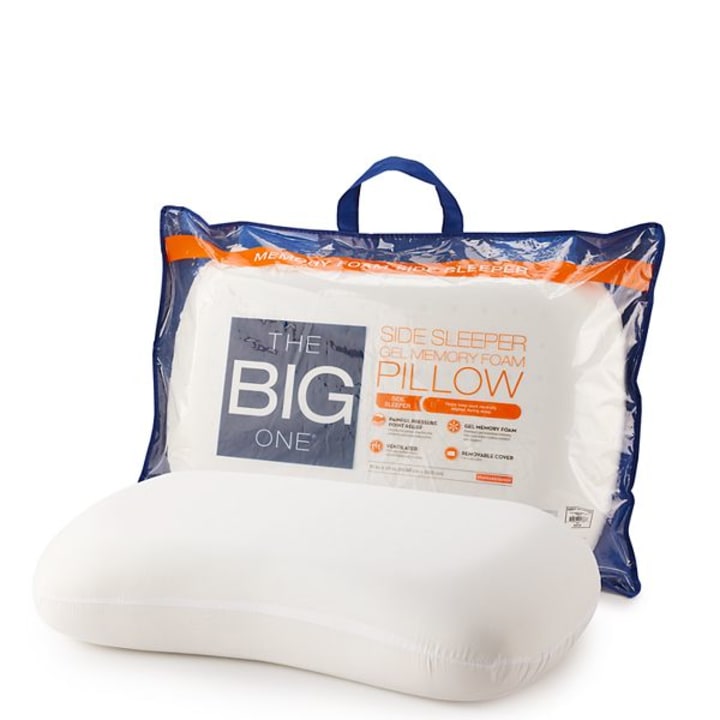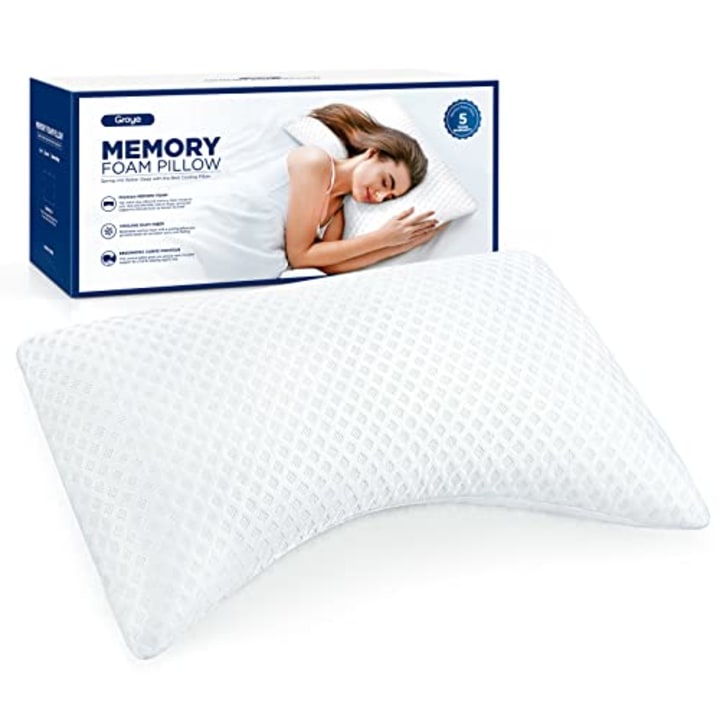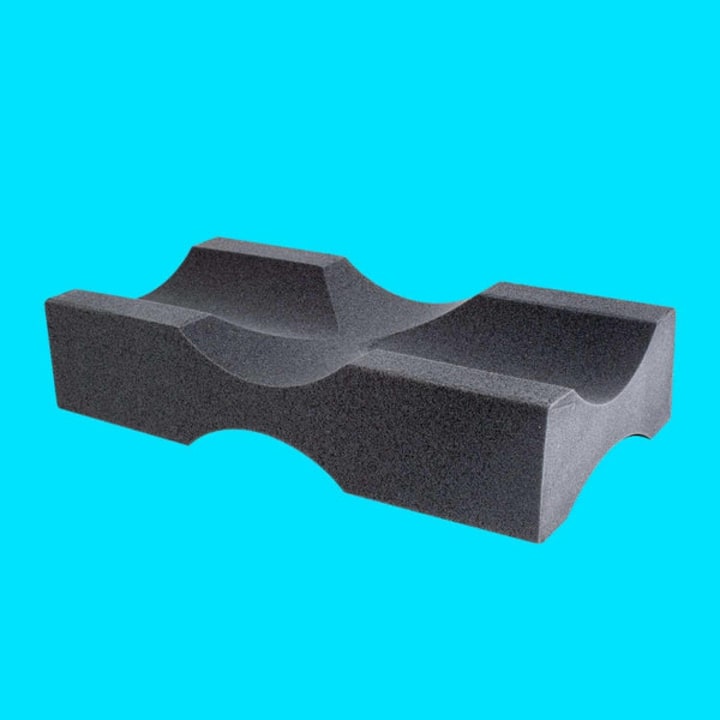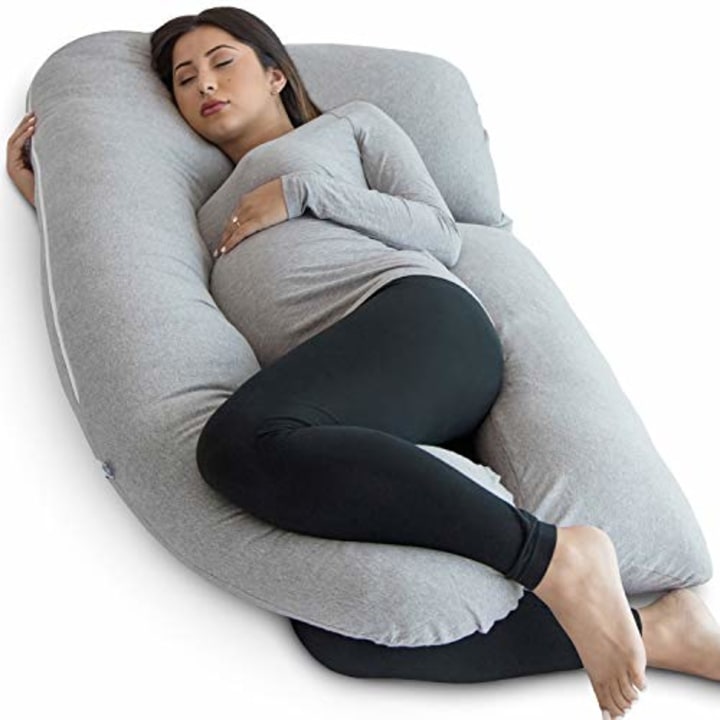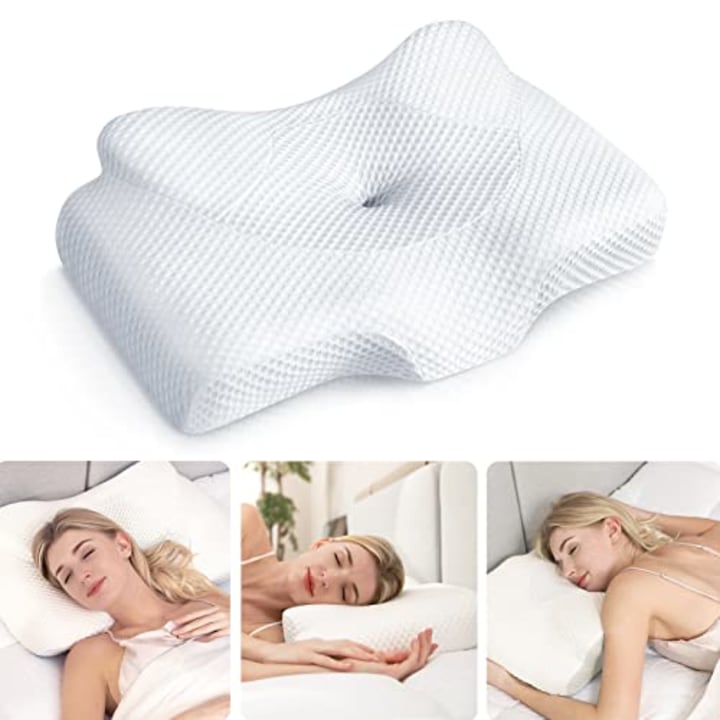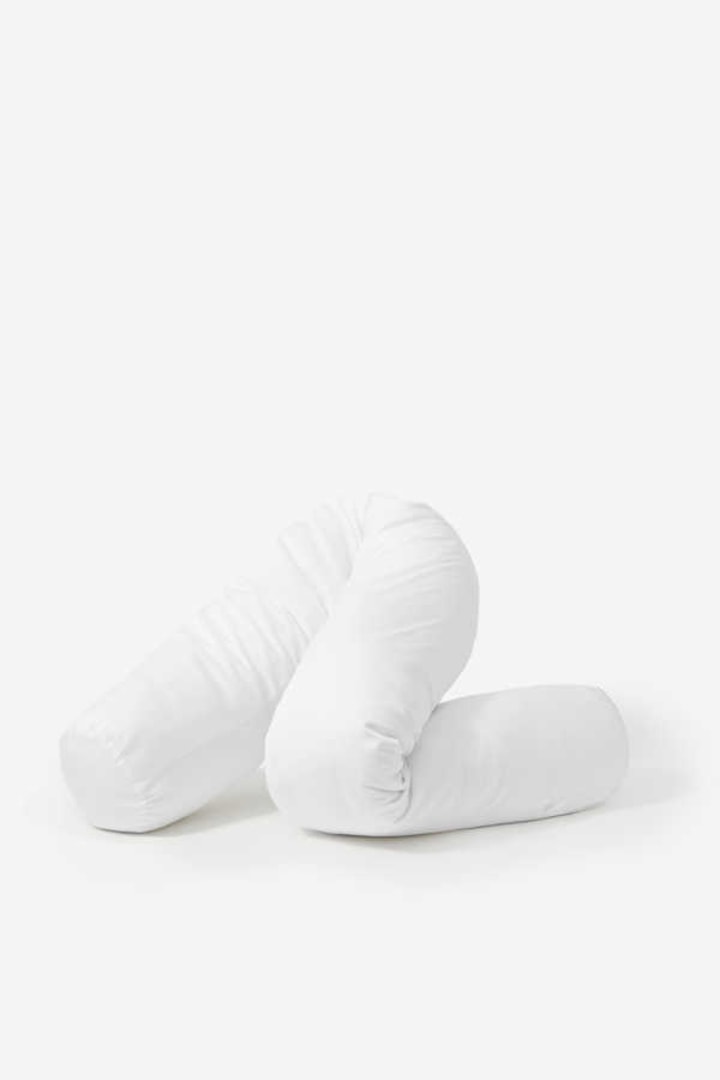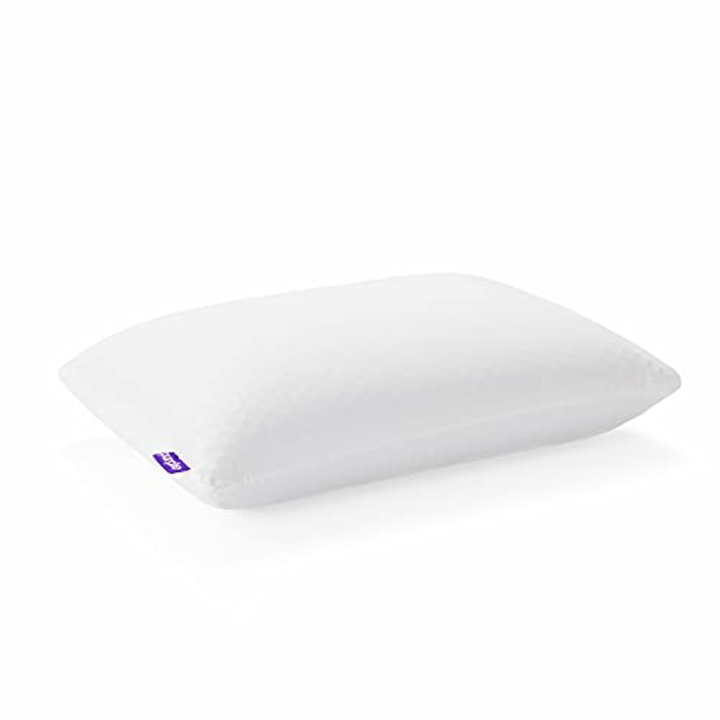There’s plenty of debate about which sleep position is actually best. (Spoiler: there isn’t a “right” answer, but Dr. Janet Kennedy, a licensed clinical psychologist, says there is a wrong one. More on that later.) According to the Sleep Foundation, sleeping on your side is preferred by 60% of adults. If you're in that majority, did you know there’s a certain type of pillow you should be using?
"Sleeping in general is very important. It’s right up there with food and water as far as necessities to survive," chiropractor Dr. David Lask tells us.
Since sleep affects other aspects of your health, creating a high-quality routine should be a priority. Shop TODAY asked Kennedy and Lask about everything side sleepers need to know when it comes to choosing pillows, and we shared a few of our personal favorites.
What to look for | Pillows | FAQs | Meet our sleep experts
What to look for in pillows for side sleepers
Neck support
Kennedy says the most important thing to look for in pillows for side sleepers is proper support to keep your head and neck in alignment with your spine. “I recommend a contour pillow that has more structure in the neck area and a well or a dip where your head would go,” she tells us.
Not all contour pillows are built equally, so she suggests trying a few out until you find the one that’s right for you.
Size of the pillows
Lask recommends choosing pillows that are 2-3 inches thick. Thicker pillows — like those between 5-8 inches — can "crank your neck into flexion and cause issues," he says.
Pillows for more than just your head
The name of the side sleeper game is alignment, and you’ll need more than just a pillow for your head to achieve it.
In order to support the rest of your body throughout the night, Kennedy says you should be using a pillow between your knees or shins “to keep your hips aligned on top of each other so that you’re not twisting and torquing your spine one way or the other.”
It doesn’t end there. She also suggests holding onto a pillow between your arms to keep your shoulders in alignment, too.
By this point, you’re probably thinking you need a pillow fortress every night, but Kennedy assures us that’s not the case.
“You can accomplish [both of those things] with a full-length body pillow or with different pillows,” she says, adding that it all depends on your needs and preferences. She also mentions using a C-shaped or U-shaped pillow that go on both sides of your body as an option for people who roll over throughout the night.
“Instead of thinking about a one-size-fits-all solution, really think about your body and your anatomy and where you struggle to stay in alignment versus where it’s easy for you,” she notes.
Temperature-regulating and cooling materials
While it’s not specific to only side sleepers, Kennedy points out that it’s a good idea to look for temperature-regulating or cooling materials — whether that’s your pillowcase or the pillow itself.
“The temperature of the head is really important for regulating core body temperature, so if your head is super hot, then your body temperature is going to be elevated and that can affect the depth and restorative nature of your sleep,” she says. “Keeping your head cool during the night is really helpful for good quality sleep.”
Pillows for side sleepers
Room Essentials Body Pillow
This budget-friendly body pillow is a favorite of Shop TODAY market assistant Audrey Ekman. "As a side sleeper who tosses and turns all night, I love a body pillow," she says. "For those nights when I roll from one end of the bed to the other (like, a gazillion times), I use it as a head pillow stretched across the top of the bed. Occasionally, I’ll use it like a normal body pillow and wrap around it head to toe, too."
While the pillow itself only comes in white, you can choose from a variety of pillowcase colors to match your aesthetic.
Luna Memory Foam Knee Pillow
When you're ready to upgrade from a regular pillow between the legs to a specialty pillow, try this option from Luna. While it's designed to rest between your knees throughout the night, you can also use it to elevate your feet or rest your arm on during the day. It comes in three sizes: standard, cooling standard and large. One verified five-star reviewer on Amazon said they used this pillow after a hip replacement and loved it so much that they continue to use it even though they're fully healed.
The Big One Gel Memory Foam Side Sleeper Pillow
As a side sleeper myself, this has been a personal favorite of mine — so much so that it's the only pillow I've slept on for the past three years. It has the contouring Kennedy mentions, so my neck and shoulders are kept in alignment. After constant use, it's even maintained its firmness, so I'm not worried about having to buy another one any time soon.
Before using this pillow, I always thought I needed more than one to be comfortable. It turns out that I just needed one really good one.
Groye Cooling Side Sleeping Pillow
Stay cool throughout the night with this highly-rated cooling pillow that also has a contour for side sleepers. "The 3D mesh allows heat to escape and fresh air to cycle in," according to the brand. They also offer a 100-night sleep trial, so you have time to decide if it really works for you.
Pillow Cube Knee Cube
This is another style of knee pillow that's designed to run the entire length of your legs and can be turned in several directions. According to the brand, it's made with temperature-regulating memory foam and comes with a breathable casing.
"I have had no knee or leg pain since I started using this pillow six weeks ago," wrote one five-star reviewer. "The configuration of the pillow makes it easy to bend or extend my legs and it tracks with my knees all night. I can actually sleep through the night now."
Pharmedoc Pregnancy Pillow
While it's called a pregnancy pillow, anyone can use this comfy U-shaped pillow. This No. 1 bestseller also has a detachable extension that can be used as a body pillow on it's own. Measuring 53 inches long, it's perfect for getting support from all sides throughout the night.
Osteo Cervical Pillow
This No. 1 bestseller has several different contours so it can accommodate any type of sleeper. It comes in six different colors and two sizes. The brand says they use two different thicknesses in the pillow so all you have to do is give it a 180-degree turn for a higher or lower contour, depending on your preference.
Pillow Cube Side Cube
While I've been loyal to my Kohl's pillow for the past few years, I'm always open to trying new things. Last month, Pillow Cube sent me this pillow to try and — while I was skeptical at first — I've actually found it quite comfortable. Instead of having a carved-out space for your head and neck, this pillow is one large square that slides perfectly in the space between your head and shoulder.
Will Beck, the company's head of growth, tells us that this is because some pillows with that carved-out space can elevate your head too much and lead to the dreaded misalignment of your spine. The pillow cube comes in a range of thickness from 4-6 inches that you choose based on your height, but 5 inches tends to be the sweet spot for the average person.
Buffy Wiggle Pillow
Shop TODAY senior SEO editor Jess Bender says this pillow is a regular presence in her bed. "It's really great because it provides full-body support courtesy of its wrappable design (and its 82-inch length allows me to use it as a head pillow AND a knee pillow at the same time)," she raves.
It's covered in soft TENCEL lyocell fabric and, according to the brand, each pillow recycles approximately 55 plastic bottles. Plus, laundry day is a breeze with its zippered, machine-washable cover.
Purple Harmony Pillow
Shop TODAY commerce writer Danielle Murphy calls this pillow the "softest pillow she owns." A bestseller on the brand's site, it's made with the same cushioning technology used for their mattresses and has an inner core of hypoallergenic ventilated latex. Plus, the outer material is made with moisture-wicking, breathable mesh, according to the brand.
Murphy says the material feels good on the face and is "great if you hate firm pillows."
Frequently asked questions
Is there a best sleep position?
While Kennedy doesn’t call out a best sleep position, she does call out the worst: on your stomach. “It’s really hard on your neck and back to sleep on your stomach,” she says. “It’s hard on your neck because you have to fully rotate [it]...and you could sleep with a pillow under your pelvis to help your back stay in neutral alignment but that feels a little cumbersome to people so generally I recommend not sleeping on your stomach.”
Lask echoes similar sentiments. "Most people who are stomach sleepers take one arm and put it up above their head and then that can actually cause damage to the shoulder," he explains. "You end up with shoulder problems, neck problems from stomach sleeping. Definitely recommend avoiding stomach sleeping."
Kennedy says sleeping on your back can be better for alignment if you use the right pillow, but it also puts you at risk for snoring and sleep apnea. “A lot of people have what’s called positional sleep apnea, which means that it only occurs on their back and so if they stay off their back, they don’t need a device to treat the apnea,” she explains.
While side sleeping can also present alignment issues, Kennedy says they’re workable by using pillows between your arms and legs. "How your body is positioned has a big impact on how you feel the next day."
Should side sleepers lay on their left or right side?
Lask says side sleepers should ideally lay on their right side, so their left side is up. "Your heart is on the left side of your body so if you put that side up, it puts less pressure down on your heart as you sleep at night," he tells us.
How do you deal with shoulder pain from side sleeping?
As a side sleeper myself, I'm no stranger to waking up with shoulder pain on random days. The way to remedy this, according to Lask, actually lies beyond the bedroom. Aside from stretching and seeing a chiropractor, he recommends lifting weights to strengthen your shoulder to help avoid pain down the line.
"You want to strengthen the muscles around the shoulder. So shoulder press, bench press, arm curls, bicep curls, tricep extensions. [You want to] work all the muscles that connect into the shoulder, the deltoid [and] keep those strong."
Lask says shoulder issues and pains can take up to a year to fully heal, so be patient with yourself. "The key is you kind of consistently do it over a time period, then you want to maintain it," he advises. "The reality of it is, muscles atrophy if you don’t use them and work on them; they slowly shrink and atrophy. So you want to consistently, even after that pain is gone, continue doing exercises."
What if sleeping with a pillow between your knees is uncomfortable?
If you’ve never slept with a pillow between your legs, jumping right into a specialty pillow might feel uncomfortable. Kennedy says that’s okay and suggests starting with a smaller, softer pillow. “Get used to what it feels like to have a soft regular pillow in there and then see if you feel like you need something more.”
She emphasizes that everyone’s body is different, so what works for someone else may not work for you. “You don’t have to start with what you think is going to be the perfect solution; you can build up to it,” she encourages. “Sleep is super sensitive. It’s hard to learn to sleep in a new position whether you’re trying to learn to sleep on your side versus your back or if you’re trying to change something about the way that you sleep on your side to improve your alignment.”
How many pillows should you use?
Lask advises keeping the amount of pillows on your bed to a minimum, especially if you're laying on more than one at night, because it can put your neck in a bad position that may cause problems down the line.
Meet our sleep experts
Dr. David Lask is a chiropractor based in Crestwood, Missouri who has been practicing for over 25 years.
Dr. Janet Kennedy, Ph.D., is a licensed clinical psychologist specializing in treatment of insomnia and other behavioral sleep disturbances. She is also the founder of NYC Sleep Doctor, where she consults on how to achieve your best sleep.
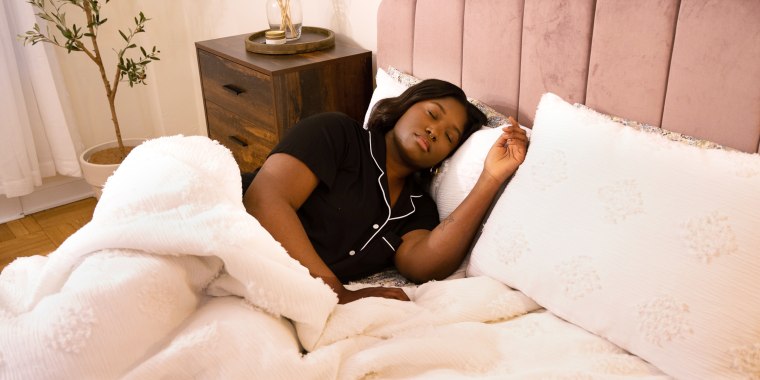
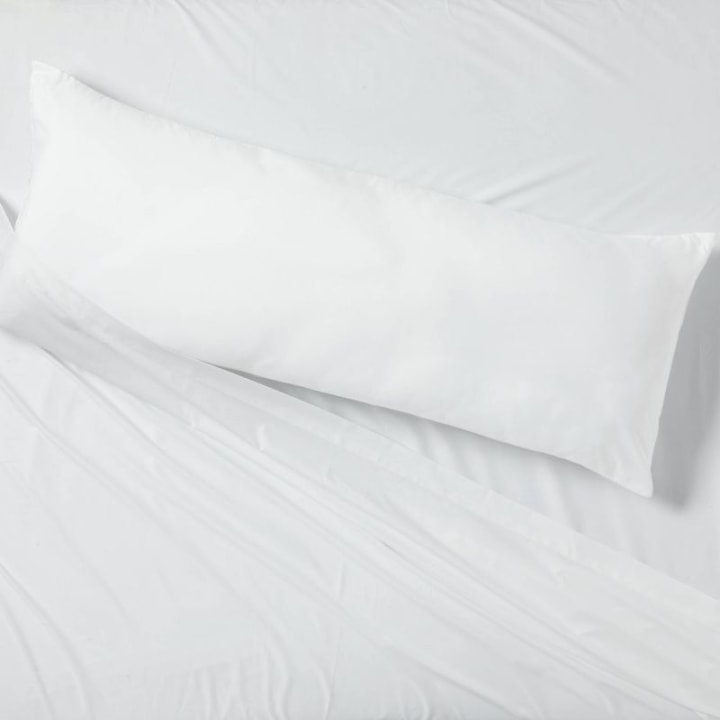
![Luna [Memory Foam Knee Pillow] for Side Sleepers Featured on [The Today Show]- Orthopedic Knee & Leg Cooling Pillow, Adaptive Bed Assistance Product, Leg Pillow for Sleeping Lower Back & Hip Pain](https://media-cldnry.s-nbcnews.com/image/upload/t_fit-720w,f_auto,q_auto:best/newscms/2024_15/1974668/319gapo5-nl-sl500-6411d33466278.jpg)
